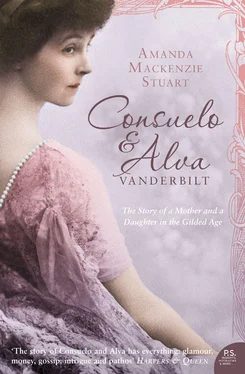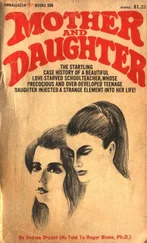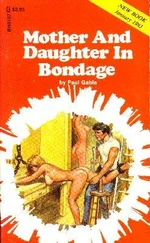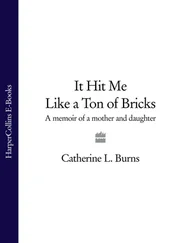There were few sounds of weeping from William K. and Alva, however. Their cautious strategy had paid off. William K.’s charm and application on behalf of the family enterprise (and possibly the Commodore’s affection for Alva) netted him $3 million – without the responsibilities laid upon his elder brother Cornelius II. The industrious and conscientious Cornelius received a larger bequest totalling $5.5 million, but this signalled his position as head of the family designate and a clear understanding that he would eventually take charge of the business. Others of whom the Commodore approved also fared well, including William Henry’s younger sons, Fred and George, while his widow had already agreed to $500,000 and the house in Washington Square as her dower settlement. The rest of the family were less than delighted. The Commodore’s eight daughters were left $2.45 million between them, split unevenly and depending, it would seem, on relative degrees of spite towards his second wife. The unfortunate Cornelius Jeremiah was only awarded $200,000 in trust.
Just when William K. and Alva felt financially secure enough to launch themselves at the very pinnacle of New York society, Cornelius Jeremiah and two of his sisters determined to sue. This was a major setback. The will case dragged through the courts for months until March 1879. Allegations flew backwards and forwards of the Commodore’s profanity, his aggression, his association with spiritualists and ‘healing hands’, and his cruelty to his afflicted son. Much to the disappointment of the press, the Claflin sisters did not produce the embarrassing testimony that was anticipated (possibly because William Henry paid them off) but the public was once again reminded of a most unfortunate association. It was alleged that the Commodore suffered from a form of mania when it came to money and his ‘virility’ was adduced to support this. In turn, the defence made much of Cornelius Jeremiah’s drunkenness, gambling and indebtedness. Most of these arguments were rejected by the judge, and the trial was suddenly settled in 1879 when William Henry volunteered to hand over some of his fortune to his sisters. Nonetheless, the feud was never patched up and it is small wonder that in 1878, Mrs Astor still felt compelled to hold the line when it came to admitting Vanderbilts to her famous ballroom.
Although the trial was acutely embarrassing, William K.’s legacy of $3 million was not included in the contested part of the will. He and Alva continued to keep a modest profile as they set about their first important building project, a house on Long Island. If Alva’s imagination had been ignited by French culture as a teenager, the model that entranced William K. was that of the English sporting gentleman with a house in the country. He was not alone. ‘Wealthy Americans learned to drive fancy coaches, play polo, hunt with hounds, breed racehorses and pedigree livestock and took up yachting …,’ writes Eric Homberger. ‘They collected Old Masters, oriental carpets, heirloom silver, and precious jewels. Americans began to describe themselves as “sportsmen”. English taste and style, suggesting refinement, social position, and wealth were professedly aristocratic in the eyes of New Yorkers. They still are.’ 15
Soon after the death of the Commodore in 1877, William K. bought 900 acres of land near Islip on Long Island and asked the architect Richard Morris Hunt to build him a sporting retreat. Alva’s vehement determination to control the story of her first marriage has disguised the fact that in their early years of wedlock, William K. was just as set on aristocratisation as his wife. At this stage, indeed, he led the way. The arrival of the railroad to Islip in the 1870s put an abundant supply of game within easy reach of New York; and it helped that Islip was secluded – the more the lives of the social elite were observed by the press, the more important privacy became. More significantly, however, the spot William K. selected for his country house was conveniently close to the first exclusive gentlemen’s club that invited him to become a member, the South Side Club near Islip which he joined the year after his marriage in 1876. The South Side was a sporting club where pedigree and social connections mattered less than whether a chap was a good shot with pleasant sporting manners, making William K. a perfect candidate. 16
The house, which was ready for occupancy in 1879 when Consuelo was two, was designed by Hunt in the fashionable ‘Stick Style’, an all-wood version of the English mock-Tudor method of half-timbering. Unlike the houses of England’s landed aristocracy, however, it was conceived from the outset as a retreat from city life. The name it was given, ‘Idle Hour’, suggested a place of leisure, decided (it was said) on the toss of a coin with Mr Schuyler Parsons on the porch of the South Side Club, who then had to make do with ‘Whileaway’ for his own establishment nearby. 17
Idle Hour cost the Vanderbilts a mere $150,000 out of the $3 million they had inherited. Throughout the 1880s they developed it to a point where the estate was almost entirely self-sufficient. Eventually Idle Hour had amenities of which most English aristocrats, sporting or otherwise, could only dream, including an icehouse, a laundry, a water tower, a house for the superintendent, a house for the palm trees and a teahouse by the bay. Idle Hour played an important role in securing William K.’s membership of other smart clubs. Although he joined the Union Club in 1877, the most exclusive of them all – the Coaching Club – only capitulated after he invited all its members to stay at Idle Hour in 1883. 18 The building of Idle Hour was just as significant for Alva for quite a different reason: it brought her into contact with its architect Richard Morris Hunt. In Alva, Hunt found a visionary client in sympathy with his ideas; she encouraged daring and innovation, allowing him to find new levels of creativity and audacity that would make him the leading architect of the Gilded Age. For her part, Alva suddenly found a way of expressing herself.
In another world, at another time, it is perfectly possible that Alva might have been an architect. Some of those who knew her best, including Consuelo, thought she was always at her happiest when she was designing houses and rearranging landscapes. This was one of life’s theatres where she ceased to be a spectator and became a paid-up member of the cast. When it came to designing Vanderbilt houses, she considered every detail and it seemed to calm her down. Hunt understood this instinctively. He described her as a ‘wonder’ to his wife, and gave Alva the use of a draughtsman in his office to help her work out her ideas. ‘I spent many delightful hours in his office, working with the draughtsmen he placed at my disposal, always encouraged by him, and inspired alike by his kindness and great genius. He was my instructor and dear friend for many years, and the work we did together was for me always an endless delight, and a great resource.’ 19 This is not to say they did not fight, but when they did they were well matched. ‘Mr Hunt had a fiery temper … my own was not mild. We often had terrific word battles. With fiery intensity he would insist on certain things. I would, with equal eagerness, insist on the contrary. Once during the planning of this house we had had a long and heated argument over some detail of measurement. Finally he turned to me in rage and said “Damn it Mrs Vanderbilt who is building this house?” and I answered “Damn it, Mr Hunt, who is going to live in [it]?”’ 20
Richard Morris Hunt has the distinction of being one of the very few men Alva ever really loved, although there is no suggestion that the relationship was anything other than platonic and plenty to demonstrate that she was a rigorously demanding client. She called it one of the great companionships of her life. It gave her scope to fulfil a long-held ambition – to change the way New York looked, and to turn it, as far as possible, back into France. The prevailing architectural fashion was the brownstone house, symptomatic, in Alva’s later professed view, ‘of the lightly veneered crudeness of America’. When Alva and Richard Morris Hunt first met there was a meeting of minds on this issue: ‘I told him how my taste trained in the European capitals had been shocked with what seemed to be a conspiracy of bad taste in American architecture and how willing and eager I was to break away from all precident [sic] and under his guidance build a thing of beauty … [I] determined that if ever the time came when I built a house I would profit by my contact with the architectural beauties of the Old World …’ 21 .
Читать дальше












